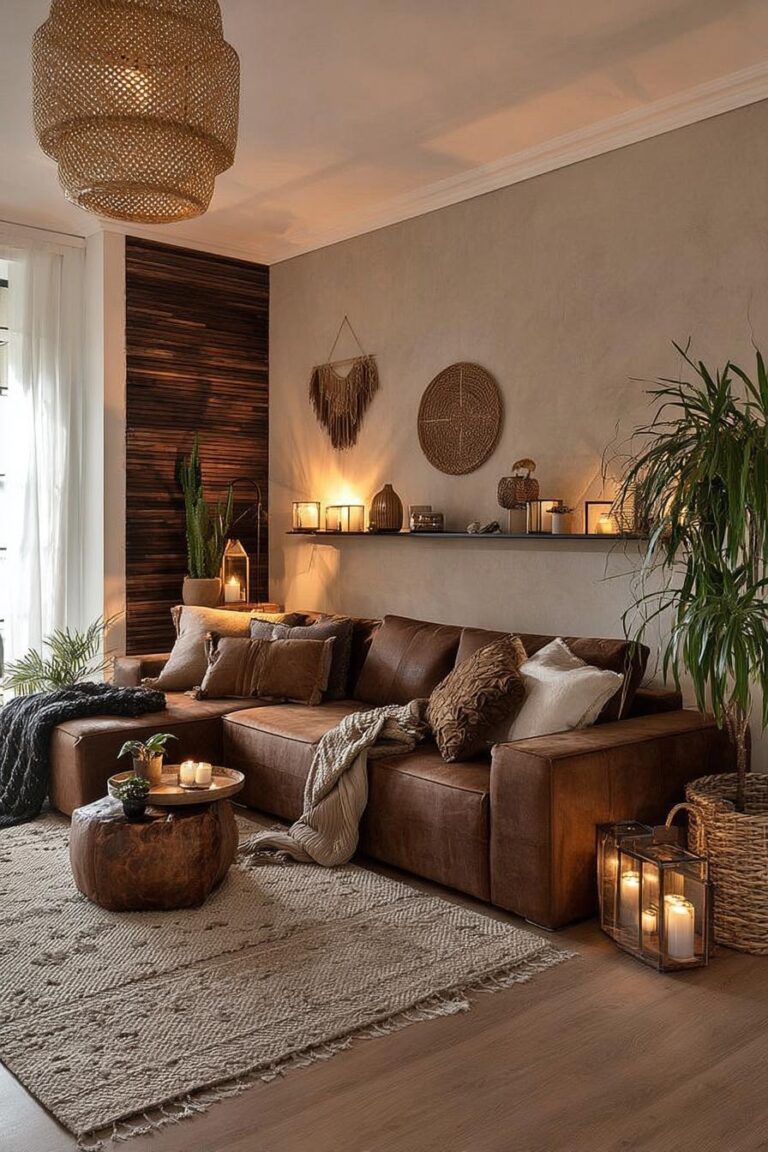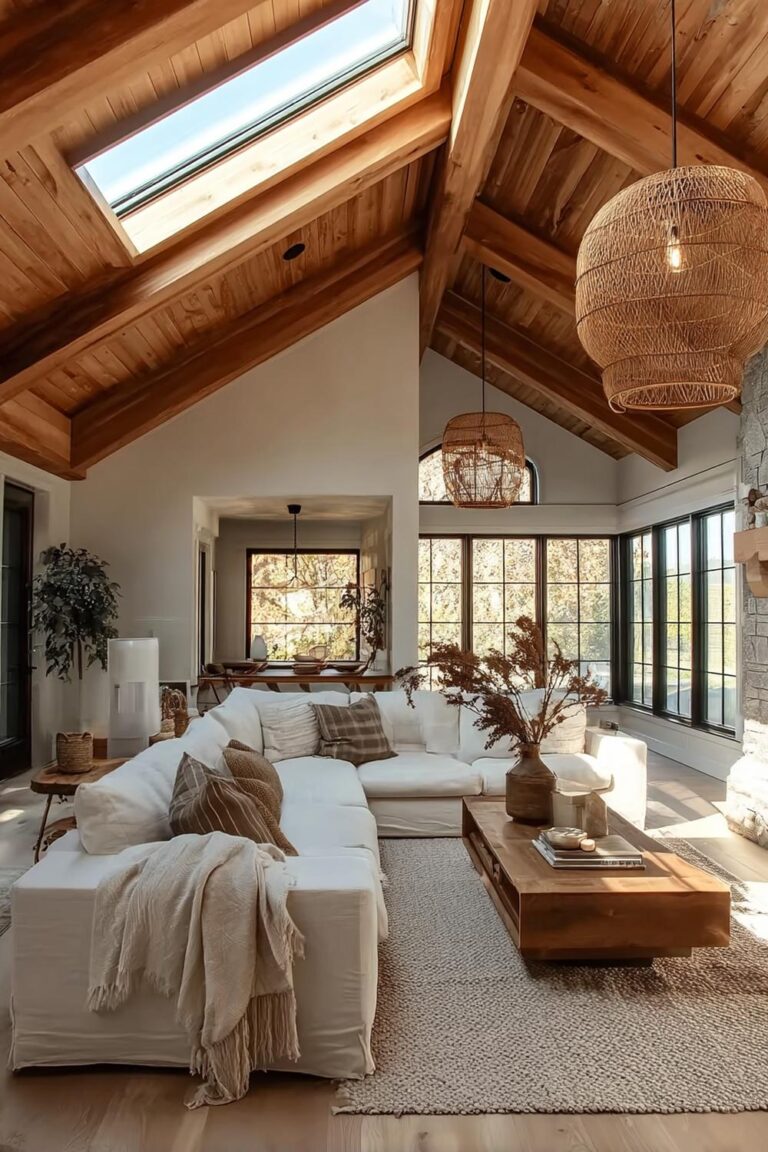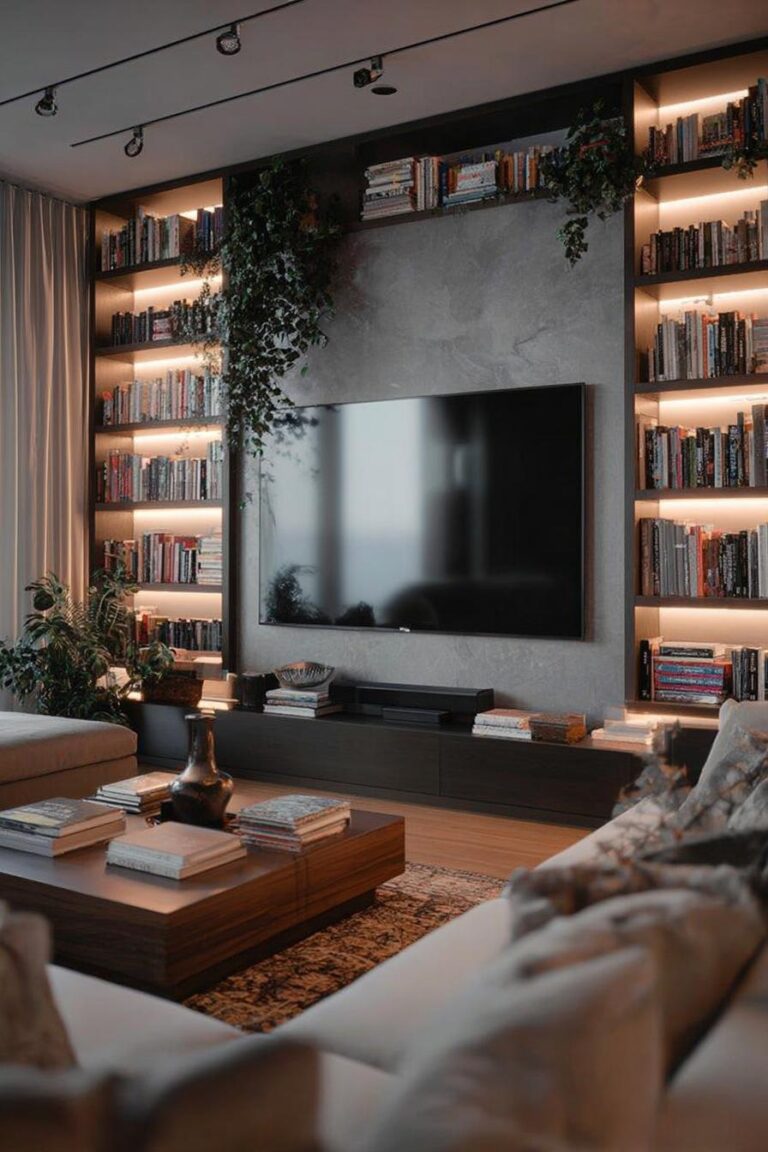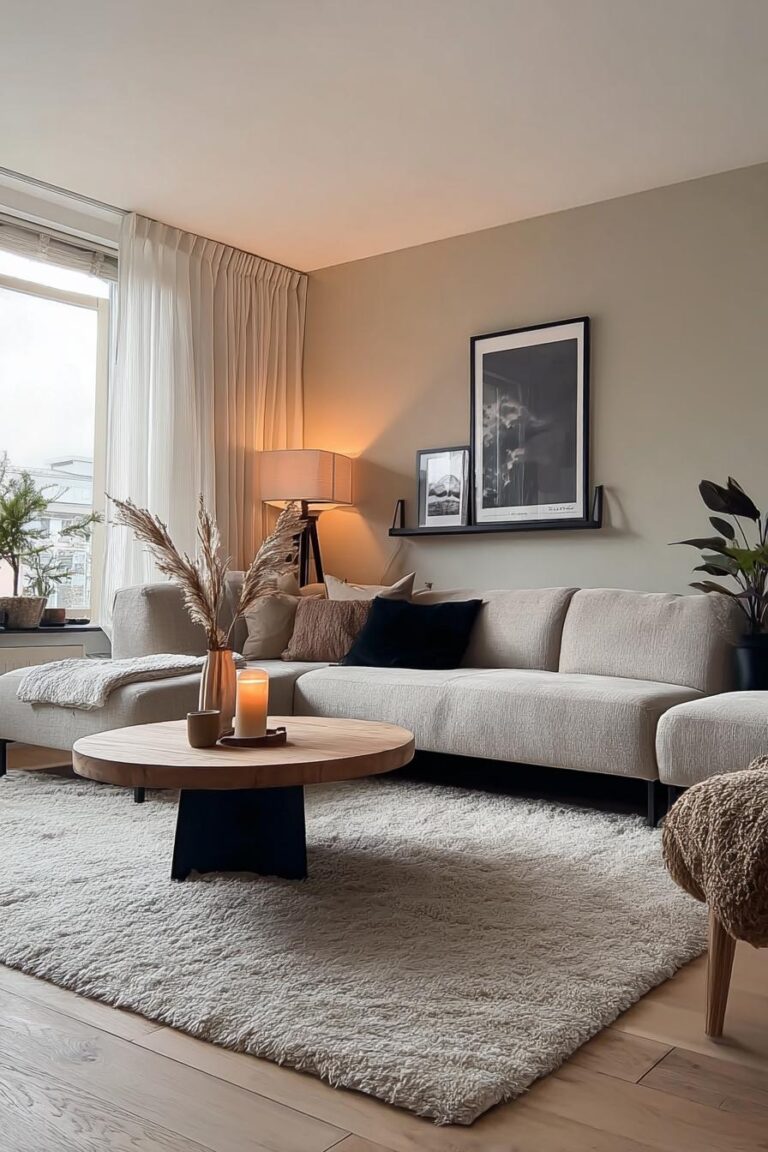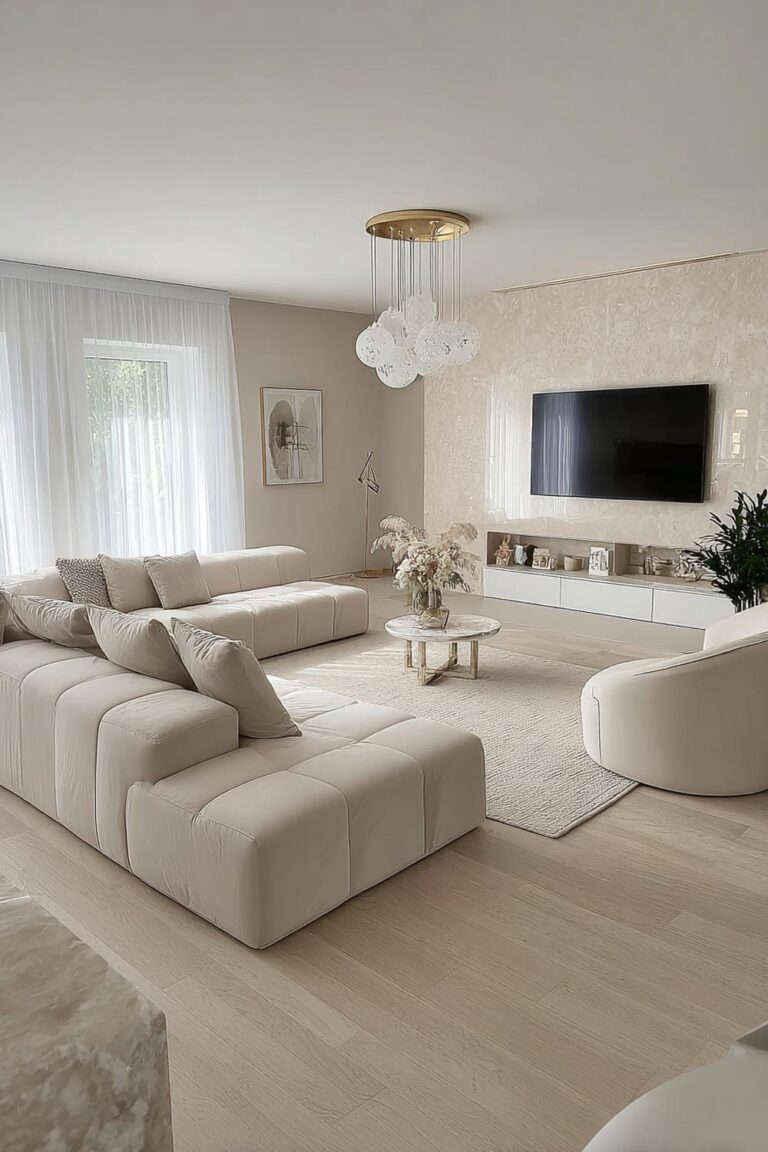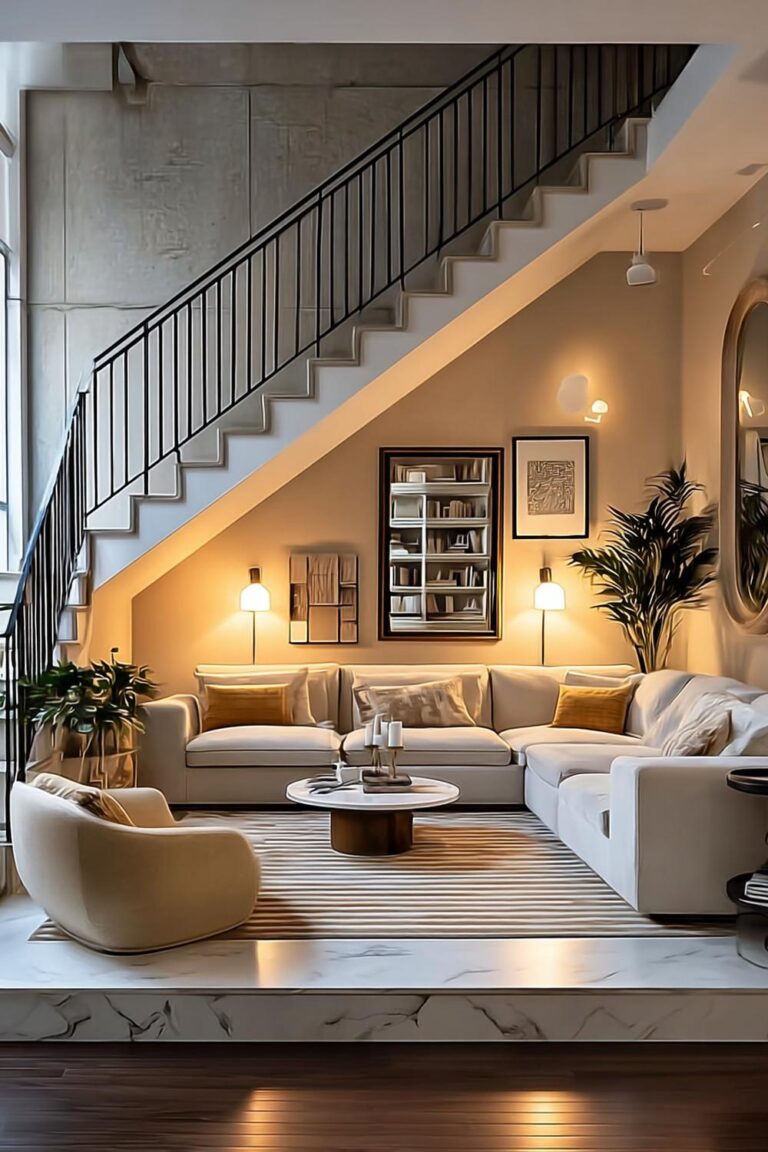Once limited to the occasional plant or muted wall, green is now redefining interiors as a color of depth, vitality, and calm. Far more than a trend, it has the power to breathe life into tired rooms and turn them into restorative retreats.
From the richness of forest shades to the freshness of mint, green plays beautifully with light and texture. Used boldly or in the smallest details, it introduces a natural harmony that makes any living space feel both grounded and renewed.
1. Bring in Lush Houseplants For a Layered Mint Vibe
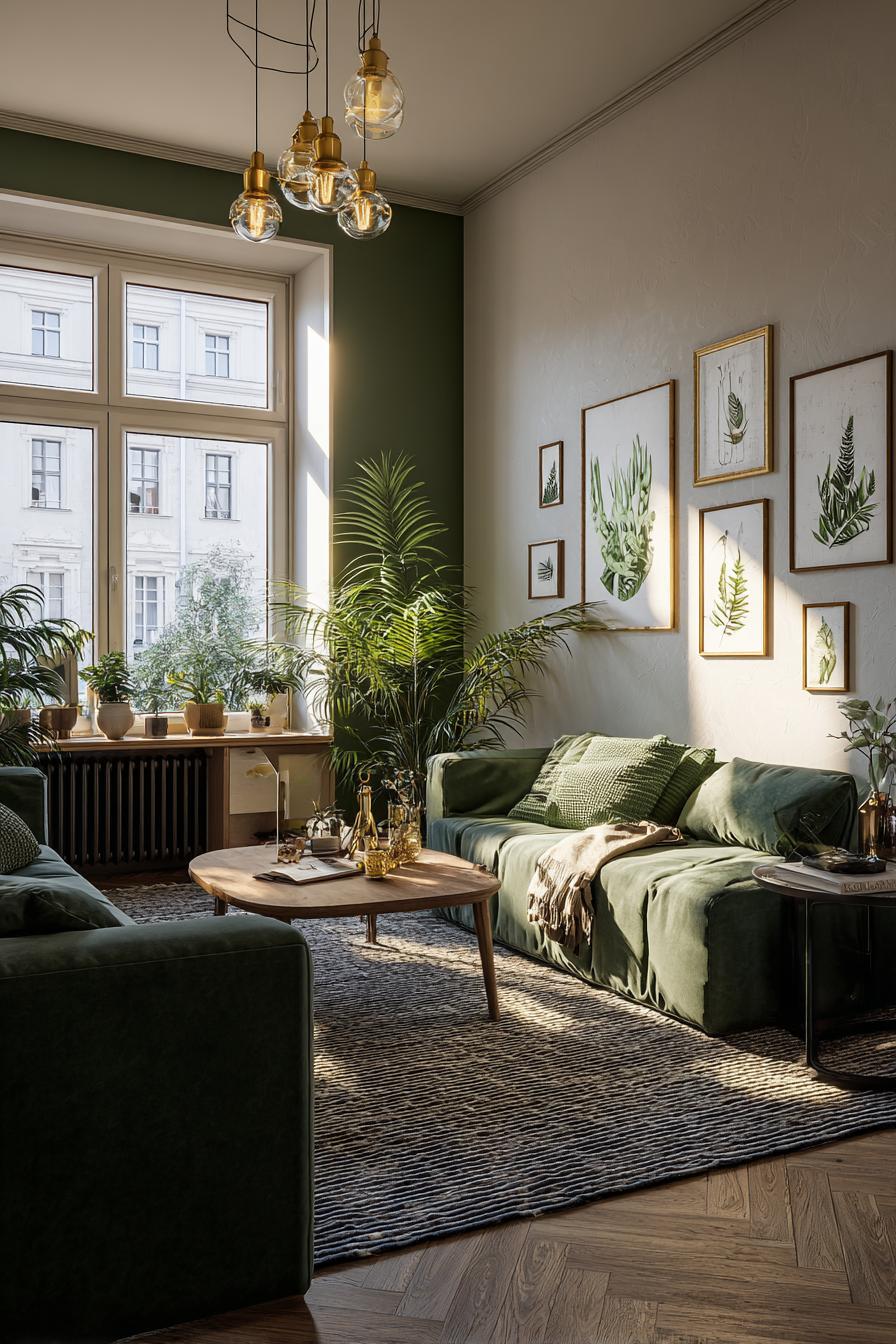
You’ve probably noticed how a single fiddle leaf fig can shift an entire room’s energy – now imagine what happens when you layer different heights and textures. Start with a tall monstera in the corner, then cascade down with trailing pothos on floating shelves.
The magic happens when you mix leaf shapes: broad elephant ears next to delicate ferns creates visual rhythm that paint alone never achieves. Each plant catches light differently throughout the day, creating an ever-changing display.
This botanical approach has moved beyond trend into timeless territory – expect to see even more creative plant staging in the coming years.
2. Opt For a Low Profile Coffee Table For Modern Simplicity
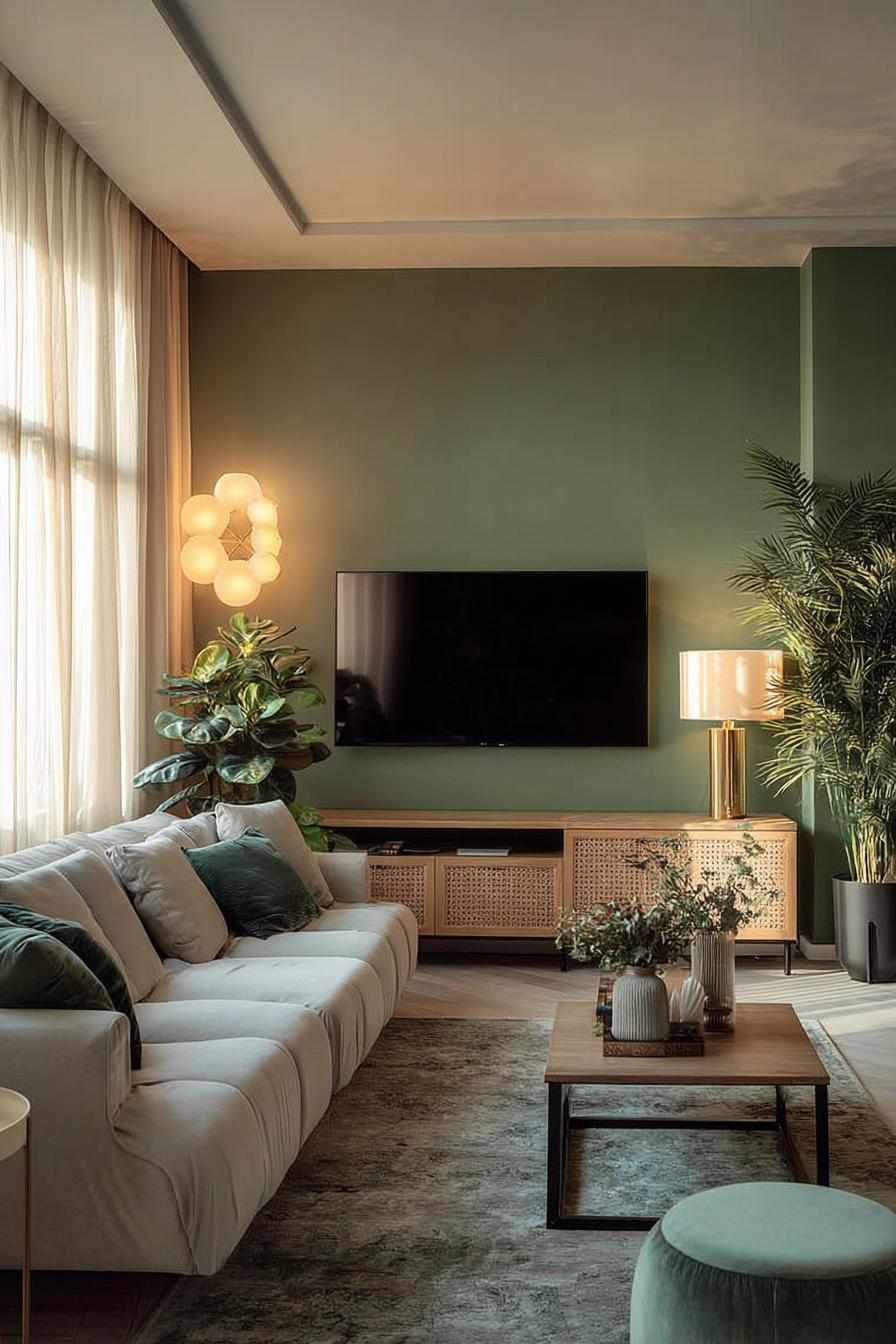
That hulking coffee table blocks more than just foot traffic – it disrupts the visual flow that makes green accents pop. A sleek, low-profile piece solves this instantly by letting your eye travel across the room uninterrupted.
Picture a glass-topped table barely eighteen inches high, allowing your olive sofa and botanical prints to command attention while the table seems to float. The transparency pulls green tones from every corner together.
Skip this advice, though, and watch how quickly your carefully chosen green elements get lost behind wooden bulk.
3. Arrange Layered Greenery For an Organic Living Room Feel
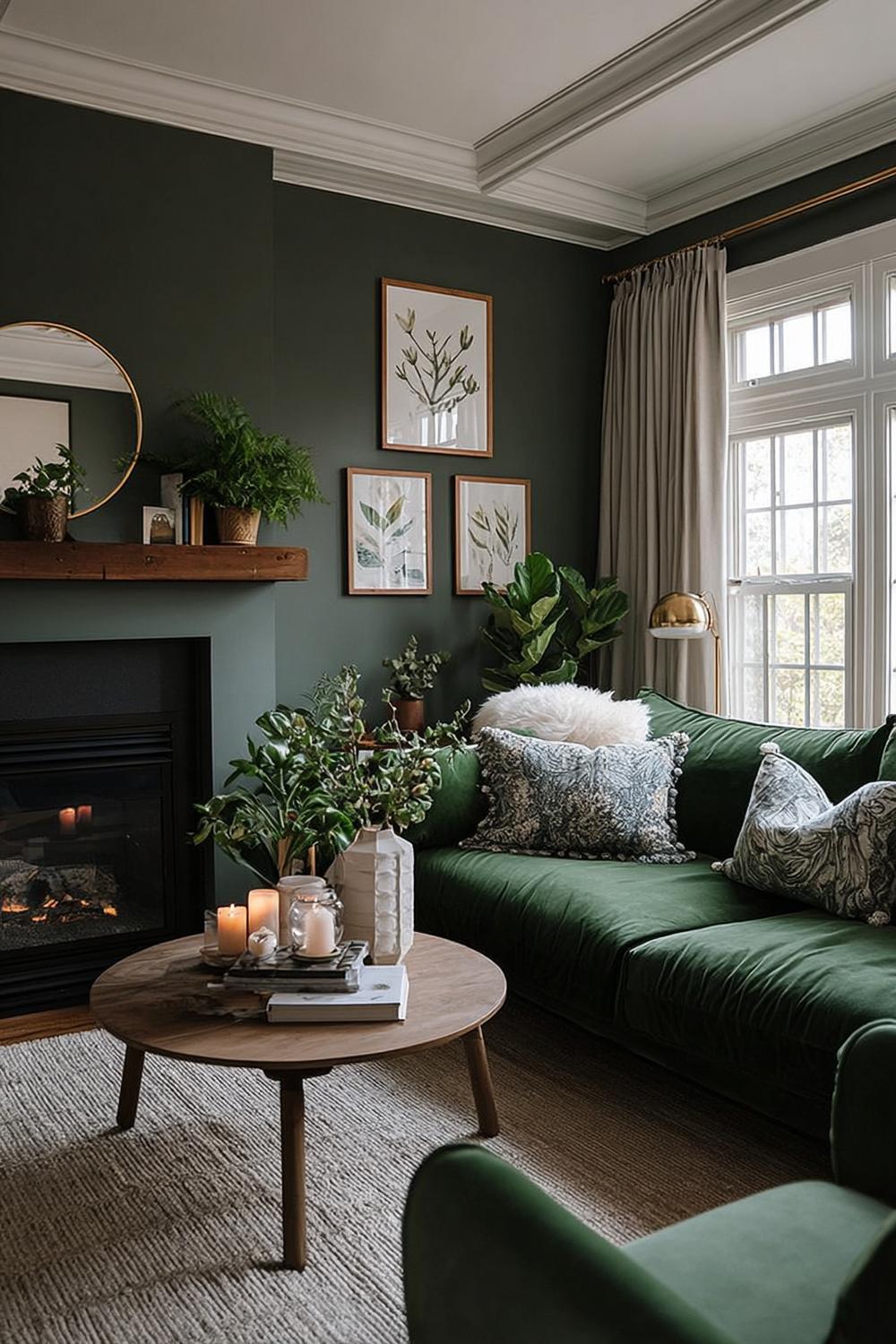
Here’s what catches visitors off-guard: greenery arranged at staggered heights creates depth that flat surfaces can’t match. Not just plants – think dried eucalyptus branches reaching toward the ceiling while moss-covered stones anchor table displays.
You build this effect by working in odd numbers (interior designers swear by threes and fives) across different zones. A tall palm near the window converses with medium-height snake plants on the console, while tiny succulents dot the bookshelf.
The varying textures – glossy leaves against matte pottery, rough bark beside smooth stones – keep your eye moving and engaged.
Layered greenery transforms static rooms into spaces that breathe and shift with natural rhythm.
4. Embrace Warm Wooden Floors For an Inviting Living Room
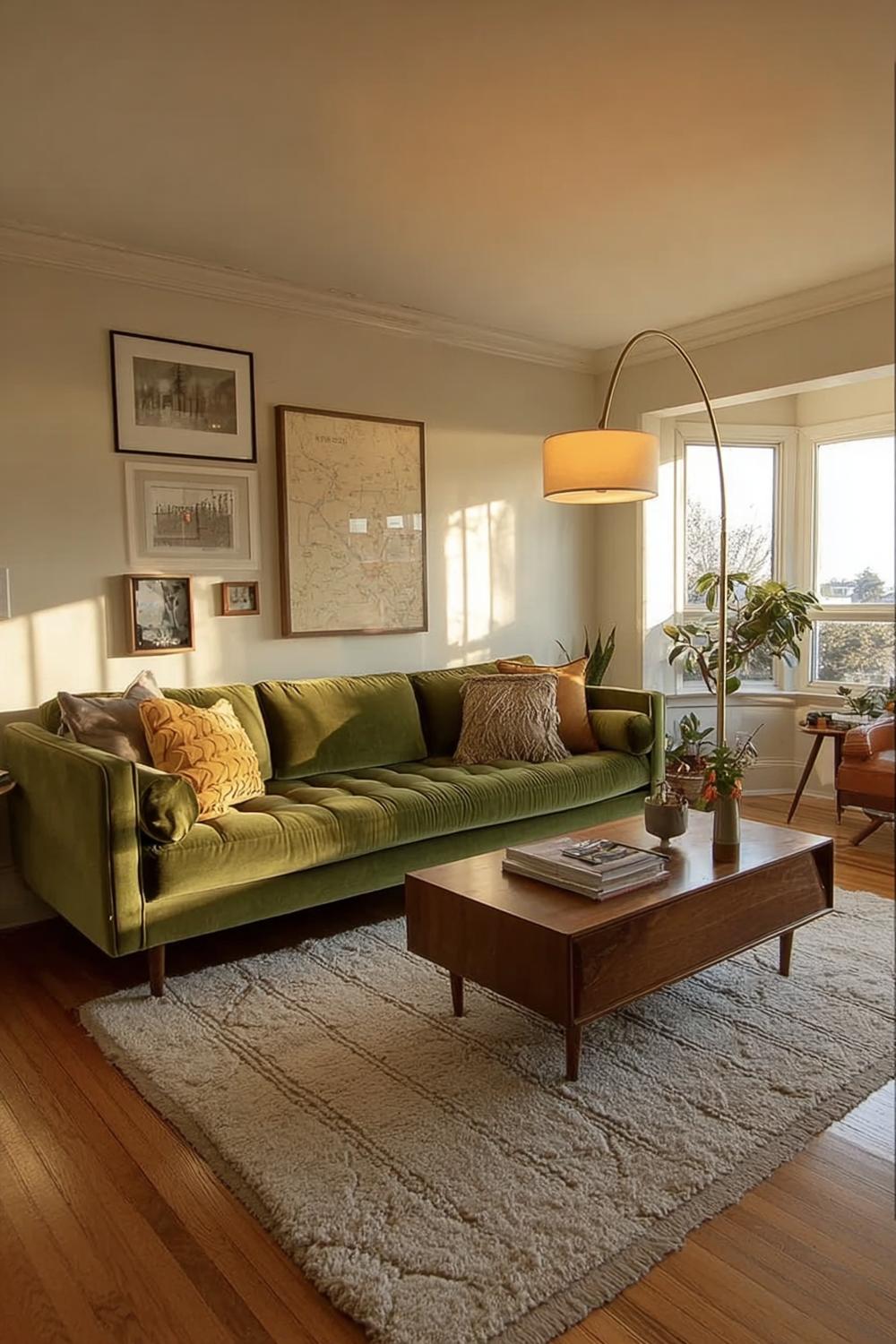
The Nordic countries figured this out years ago: warm wood underfoot makes green sing in ways carpet never could. This combination has surged back as homeowners rediscover how honey-toned oak or walnut grounds botanical colors.
Wood’s natural grain echoes the organic patterns you see in leaves and stems, creating visual harmony that feels intentional rather than forced. The warmth in the wood – those amber undertones – prevents cooler greens from feeling chilly or clinical. Moreover, the reflective quality of finished wood bounces light up into your plants and green textiles.
Now that you understand this foundation principle, let’s explore how specific furniture pieces amplify the effect.
5. Style the Armchair with Sage Green For Subtle Elegance
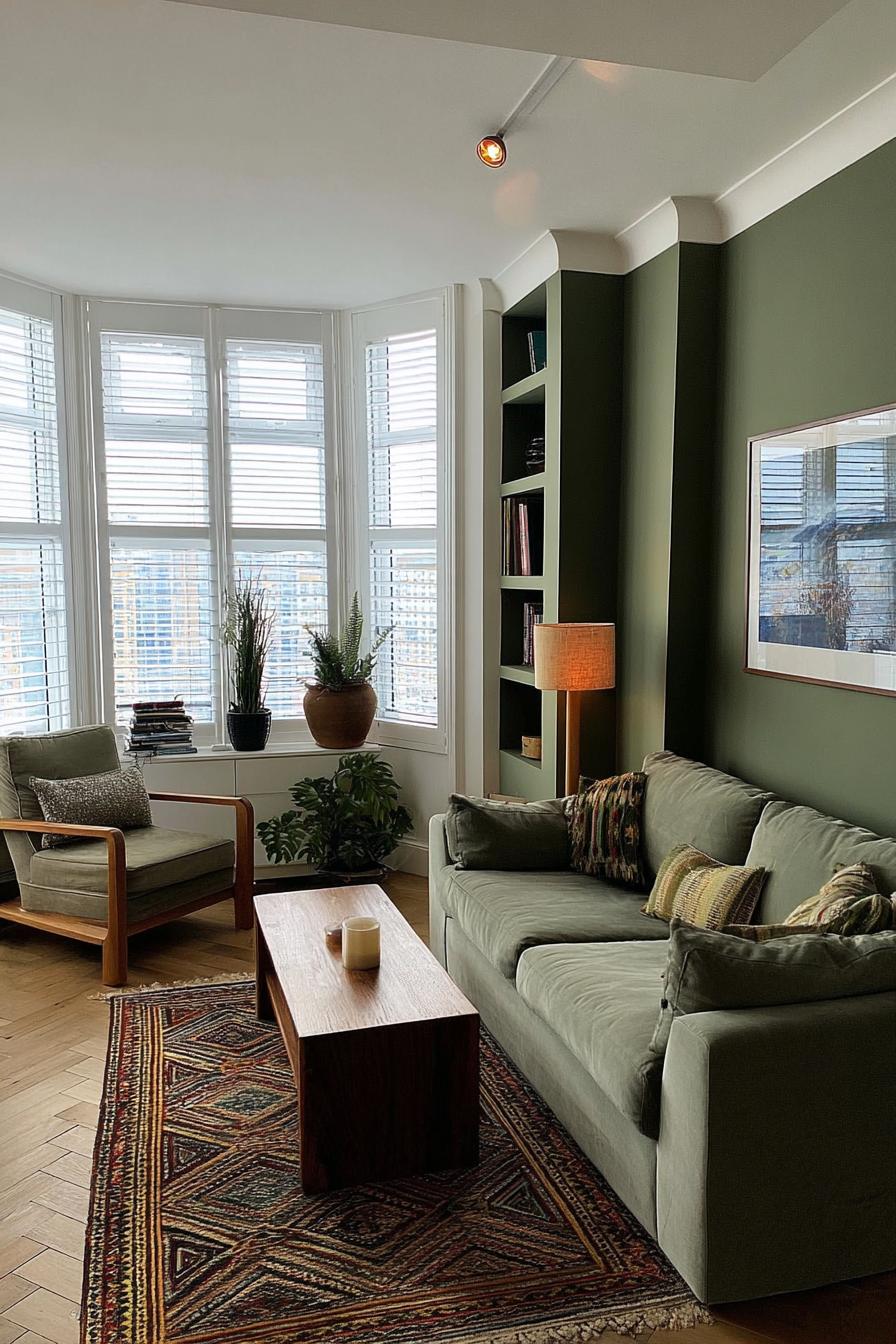
That vintage leather armchair has served you well, but notice how it darkens the corner where natural light should dance. A sage green replacement changes everything about that forgotten zone.
Imagine sinking into soft sage velvet as afternoon sun filters through sheer curtains – the color seems to shift from grey-green to silver depending on the light. You could pair it with a cream throw (texture matters here) and watch how the combination softens the entire room’s mood.
Even skeptics admit sage works where brighter greens might overwhelm.
This single furniture swap often triggers a cascade of smaller changes – suddenly you’re reaching for botanical prints and considering eucalyptus stems.
6. Group Art Prints in a Gallery Wall For Decor Impact
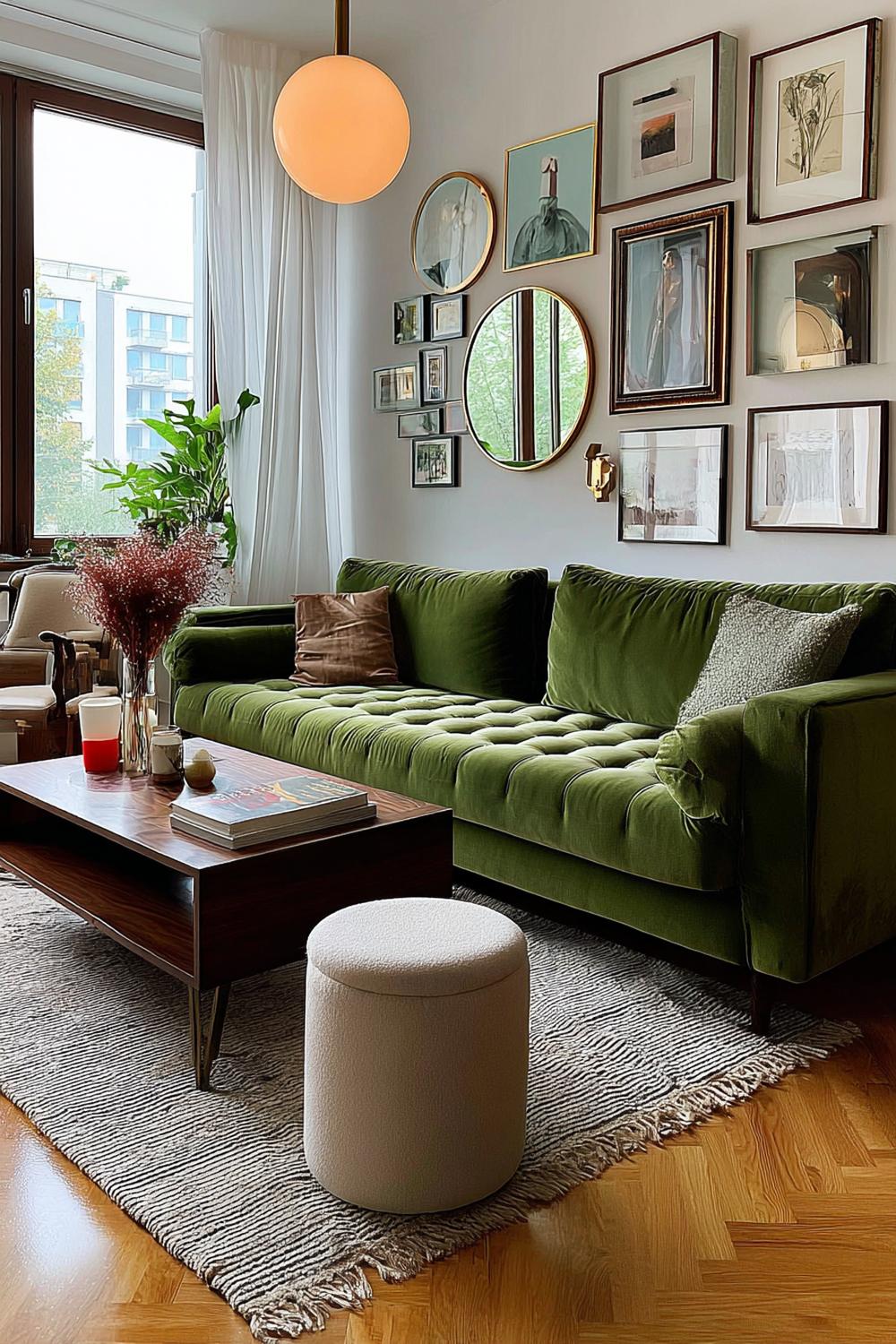
Forget symmetrical arrangements – cluster your botanical prints asymmetrically for real visual punch. Mix vintage fern studies with modern abstract leaves, varying frame colors from brass to matte black.
The grouping creates a focal point that draws attention upward, making your ceiling feel higher while celebrating green in artistic form. This approach lets you incorporate green without committing to permanent changes.
7. Showcase Modern Lighting Fixtures For a Chic Light Filled Ambience
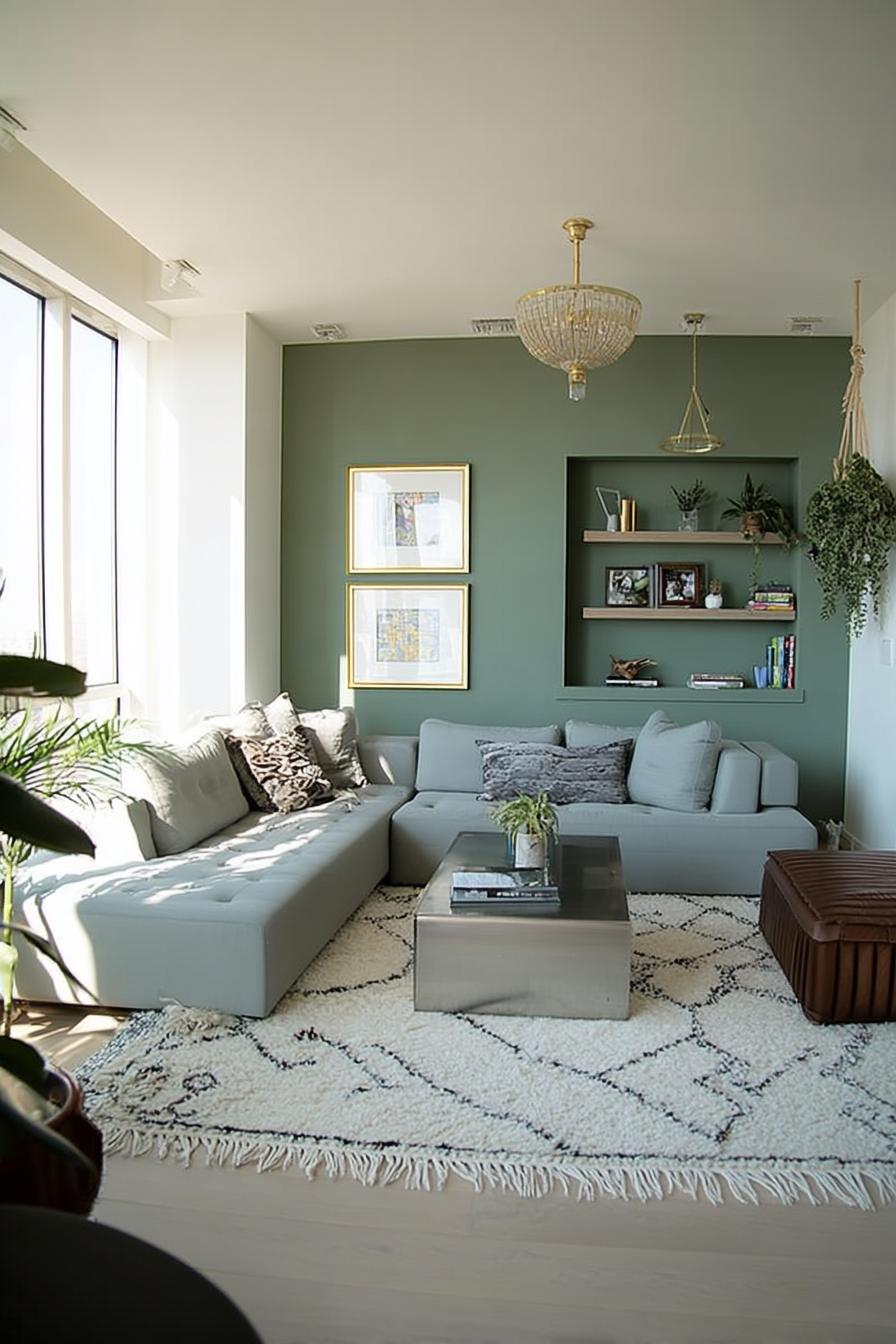
First, pendant lights in brushed brass catch morning rays. Second, sleek floor lamps with sage shades cast pools of warmth. Third, LED strips behind floating shelves make your plants glow after sunset.
Modern fixtures do more than illuminate – they become sculptural elements that complement your green palette. The key lies in choosing pieces with organic curves or botanical motifs that echo nature’s forms. Think about how light temperature affects color perception too; warmer bulbs make greens feel cozier, while cooler ones enhance their freshness.
Replace those dated fixtures and watch your green elements come alive in completely new ways.
8. Incorporate Sun Soaked Windows For a Bright Airy Living Space
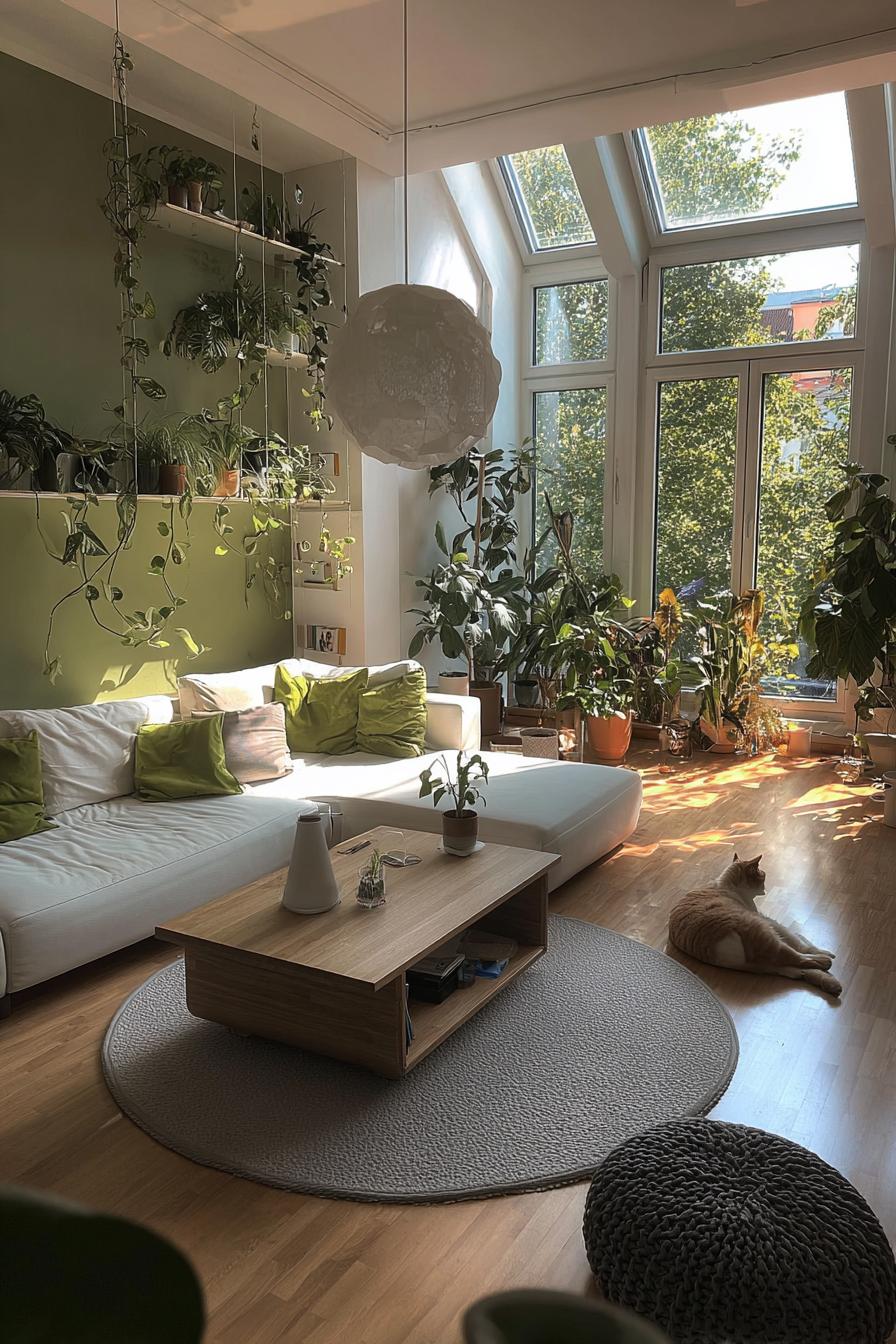
Surprisingly, Victorian homes originally featured heavy drapes not for privacy but for insulation – today’s energy-efficient windows free you to embrace transparency. Your green elements crave this natural illumination more than any artificial source could provide.
Bare windows (or dressed with sheer linen) flood your space with the kind of light that makes jade plants shimmer and sage walls shift through countless subtle variations. Position your greenest elements – whether plants, pillows, or artwork – where sunbeams strike them directly during peak hours.
You’ll notice how morning light brings out yellow undertones while afternoon sun deepens everything toward forest tones.
Consider installing window film in geometric patterns if privacy concerns you – it creates stunning light patterns while maintaining that bright, open feeling.
9. Display Curated Books and Decor For a Balanced Color Combo

Books with green spines aren’t just reading material – they’re design elements that reinforce your color story. Strategic placement transforms ordinary shelving into cohesive displays.
When you alternate green-spined volumes with cream ceramics and small plants, you create rhythm that guides the eye smoothly across the shelf. The benefit extends beyond aesthetics; this approach makes your collection feel intentional rather than cluttered, turning everyday objects into art.
Look closer at how different shades work together: emerald book covers next to sage pottery, with perhaps a brass bookend catching light between them – these micro-compositions build toward the room’s larger harmony.
10. Mix Metallic Accents with Olive Hues For Modern Sophistication
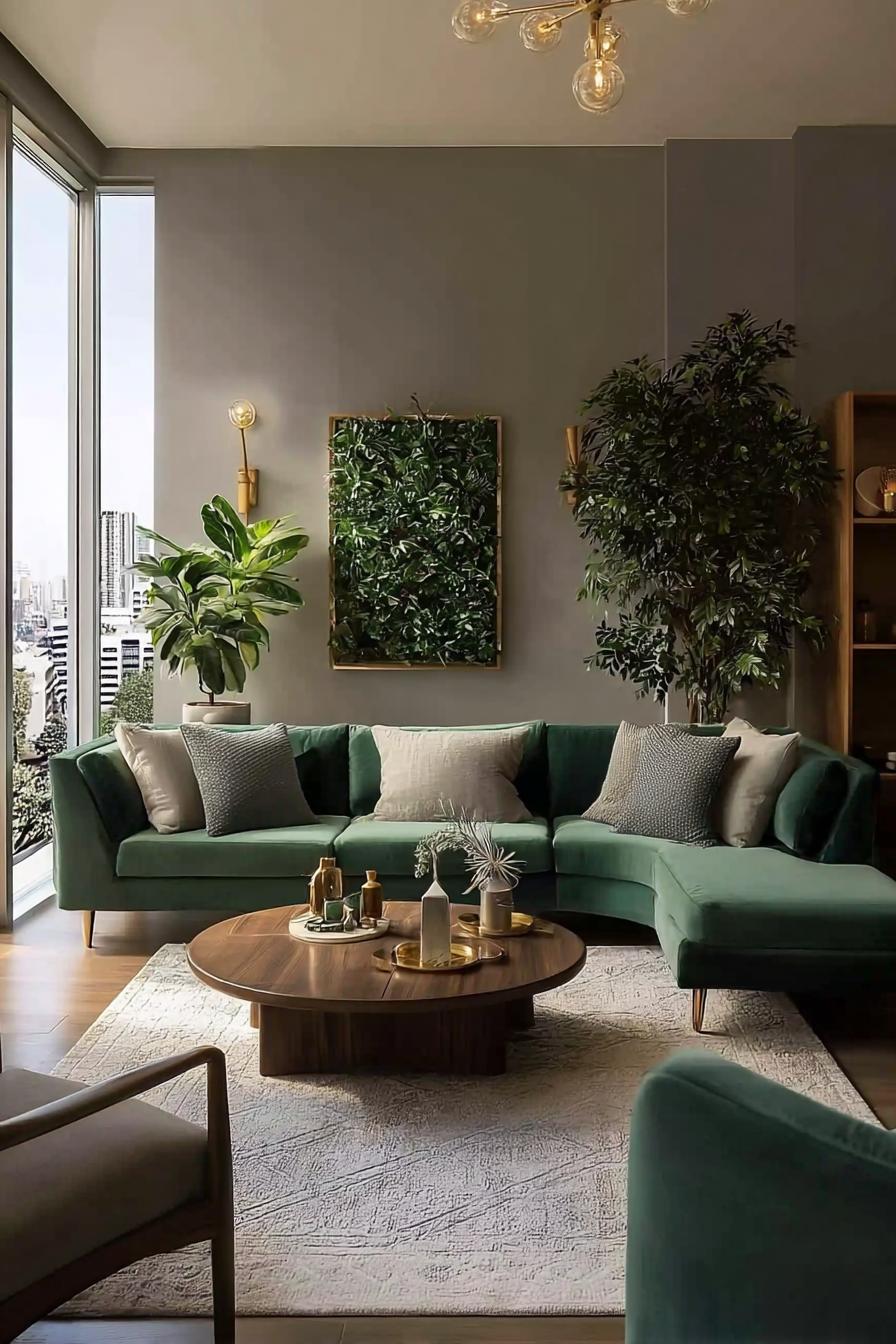
Olive and gold together create a conversation as rich as aged wine – each element bringing out hidden notes in the other.
Picture olive linen curtains framing a vintage brass mirror, or copper planters housing trailing ivy against olive walls. The metals warm what might otherwise feel too military or severe, while the olive grounds any flashiness the metallics might suggest. This partnership works because both share earthy undertones.
11. Anchor the Space with Bold Black and Green Built in Shelving
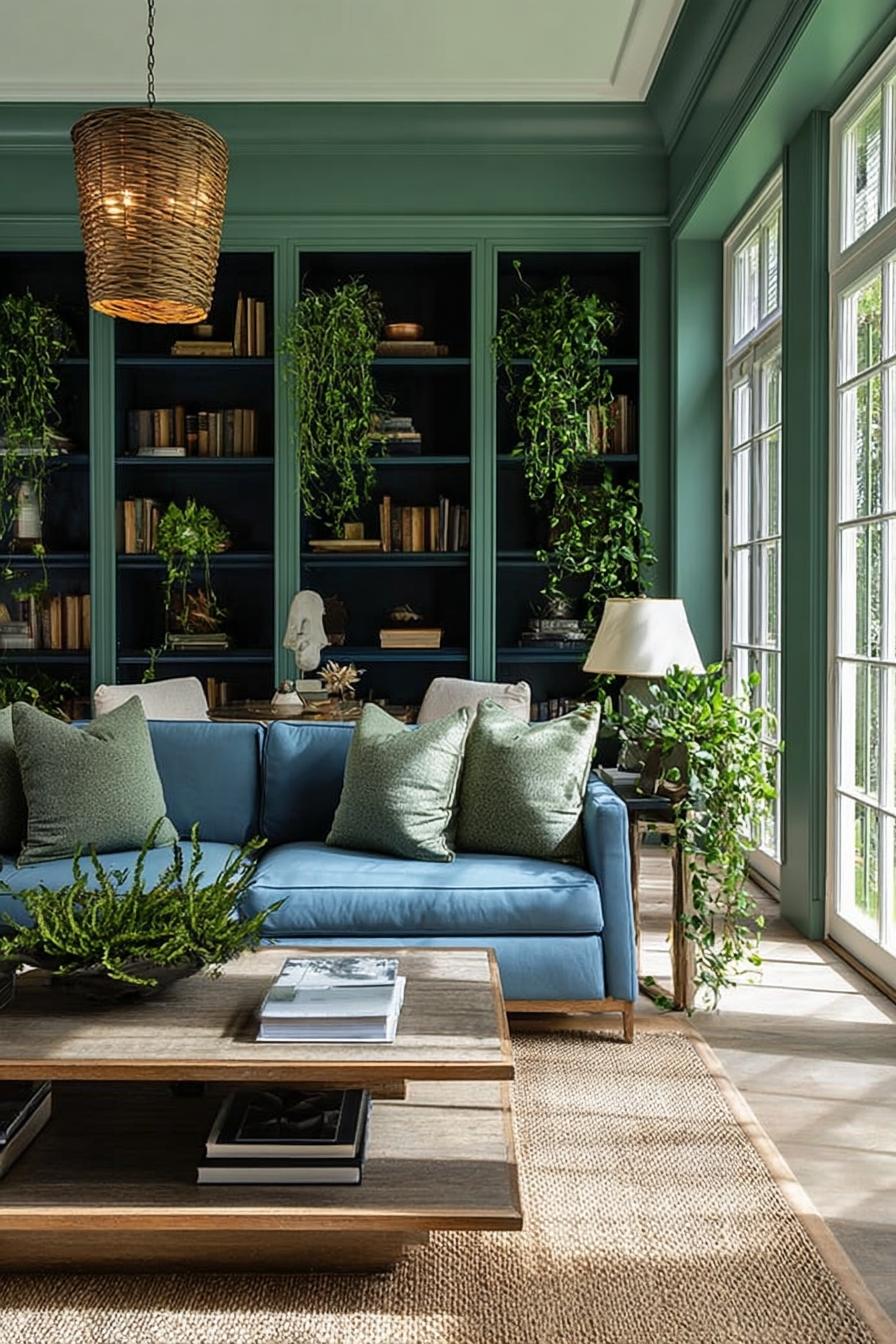
If you’re ready to make a statement that outlasts trends, black framework with green backing transforms built-ins into architectural features. This combination grounds the room with serious visual weight.
Black edges create graphic lines that make green backgrounds pop – it’s like framing nature itself. The contrast sharpens both colors; your green becomes more vivid while black gains depth from its botanical partner. Plus, this bold choice actually makes styling easier since the strong backdrop unifies whatever you display.
Paint the back panels in graduated green tones (darker below, lighter above) to add subtle dimension without overwhelming the eye.
12. Feature Wicker Baskets As Organic Storage Accessories
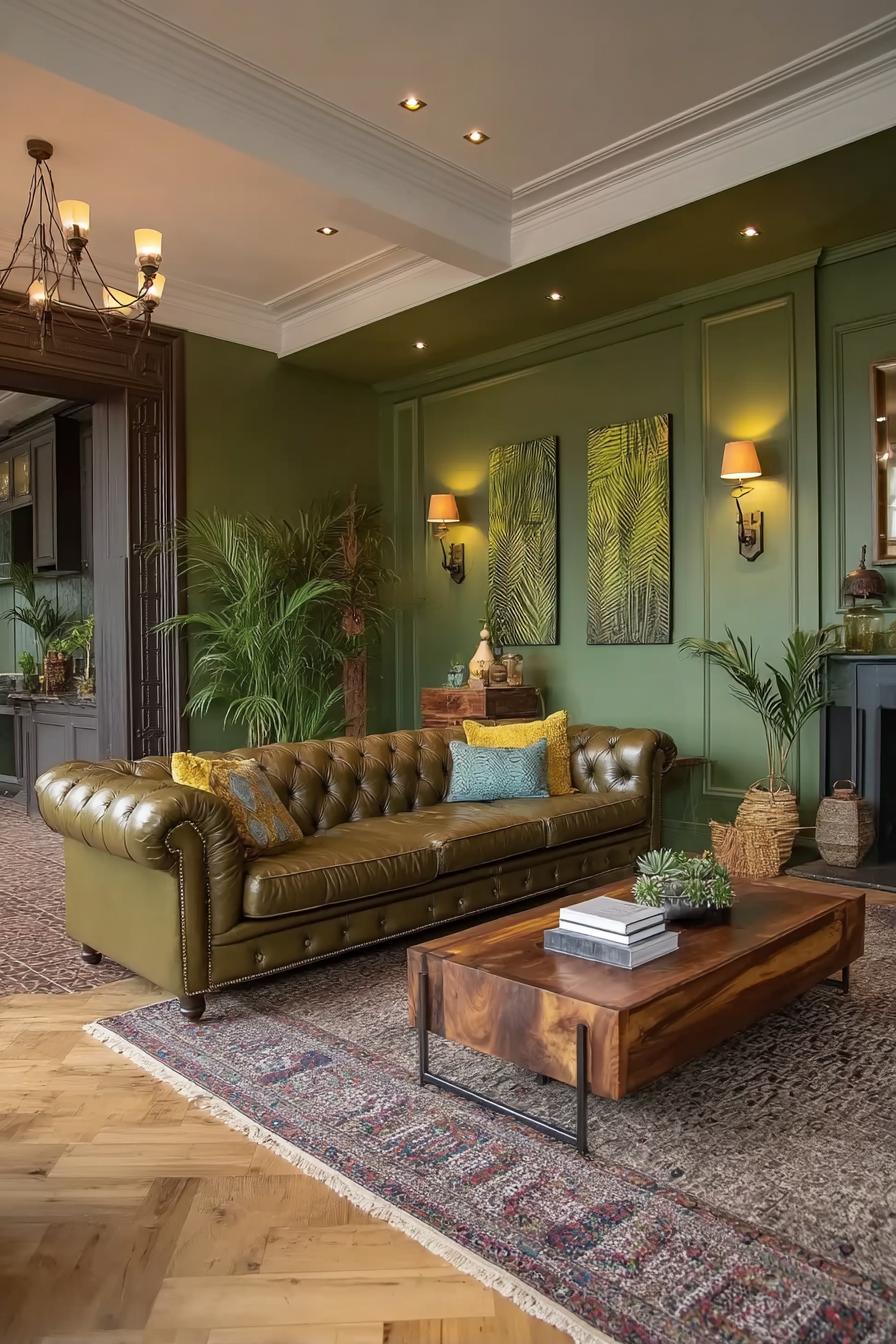
Like bringing a piece of the garden shed indoors, wicker introduces texture that synthetic storage never achieves. These woven pieces bridge the gap between functional and decorative.
Watch how wicker’s golden tones warm up cool greens while its open weave creates shadows that shift throughout the day. Tuck them under console tables, stack them in corners, or mount them on walls – each placement adds organic texture that complements your green elements while hiding everyday clutter.
Just remember: wicker shows dust more than solid storage, so these pieces demand regular attention to maintain their fresh appearance.
13. Pair Neutral Curtains with Soft Green Elements For Subtle Harmony
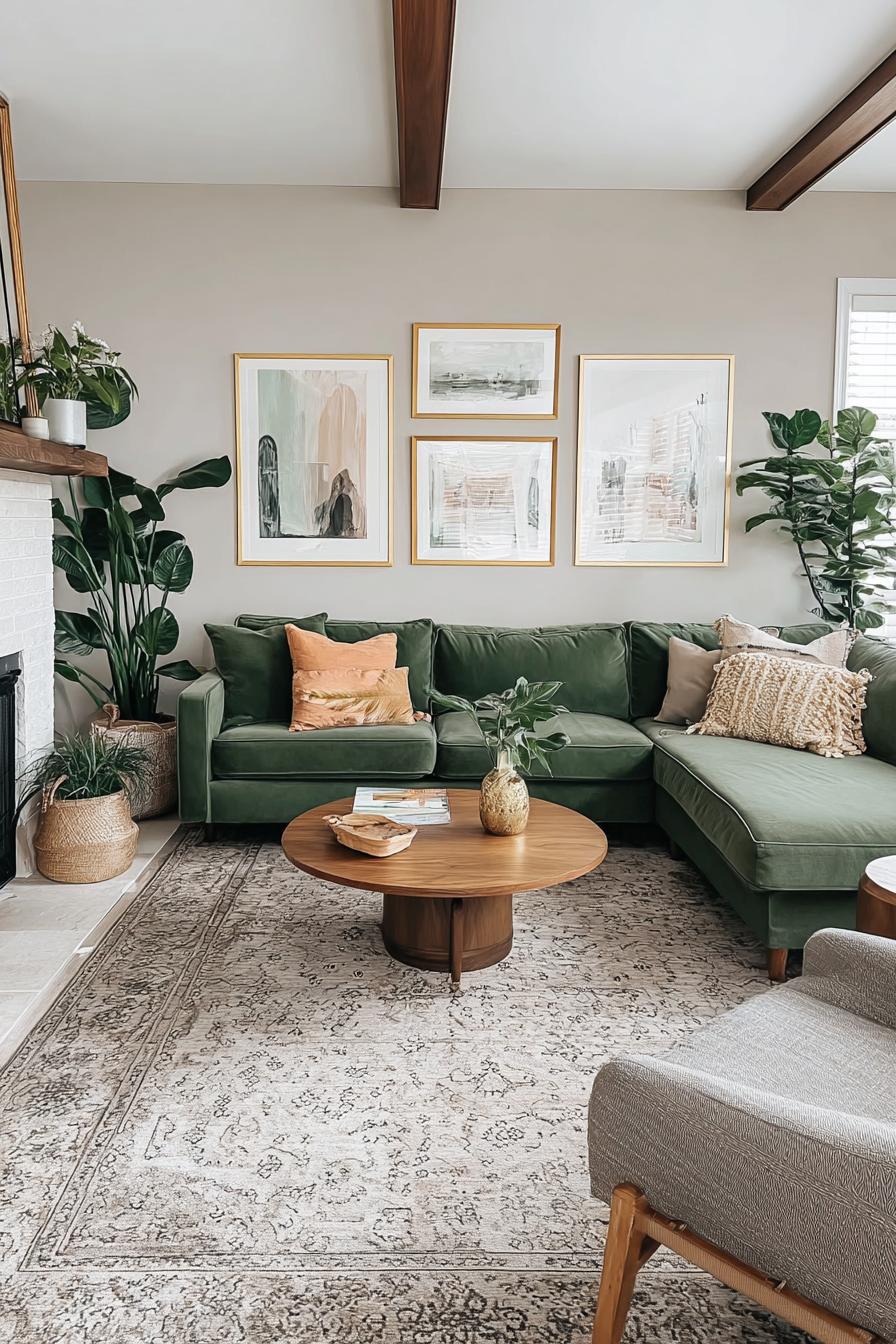
Why do so many green rooms fail? They shout when they should whisper. Neutral curtains provide the quiet backdrop that lets green accents truly sing.
Consider how cream linen panels soften the edges of a room with sage throw pillows and eucalyptus arrangements. The neutrals give your eye a place to rest, making those green moments feel discovered rather than forced. For instance, oatmeal-colored curtains beside a single emerald armchair create more impact than green everywhere would.
The interplay continues as daylight shifts – morning sun through neutral fabric casts the gentlest green reflections from your plants and pillows, creating an atmosphere that evolves rather than static color that never changes.
14. Create Contrast with Grey and White Accents on Coffee Table

Building on our earlier low-profile table suggestion, the surface itself becomes a canvas for exploring green through contrast. Grey and white accessories make green elements appear more saturated – a simple trick that transforms ordinary into extraordinary.
The science involves complementary color theory, but the practice stays simple: a white marble tray holds sage candles while grey stone coasters wait beside a small jade plant. This neutral foundation lets you swap green accents seasonally without replacing major pieces.
Meanwhile, the grey acts as a bridge between pure white and your various green tones, preventing harsh jumps that jar the eye.
Styling with grey and white creates breathing room that makes each green element feel intentional and precious.
15. Accent the Room with a Plush Pink and Beige Throw Pillow
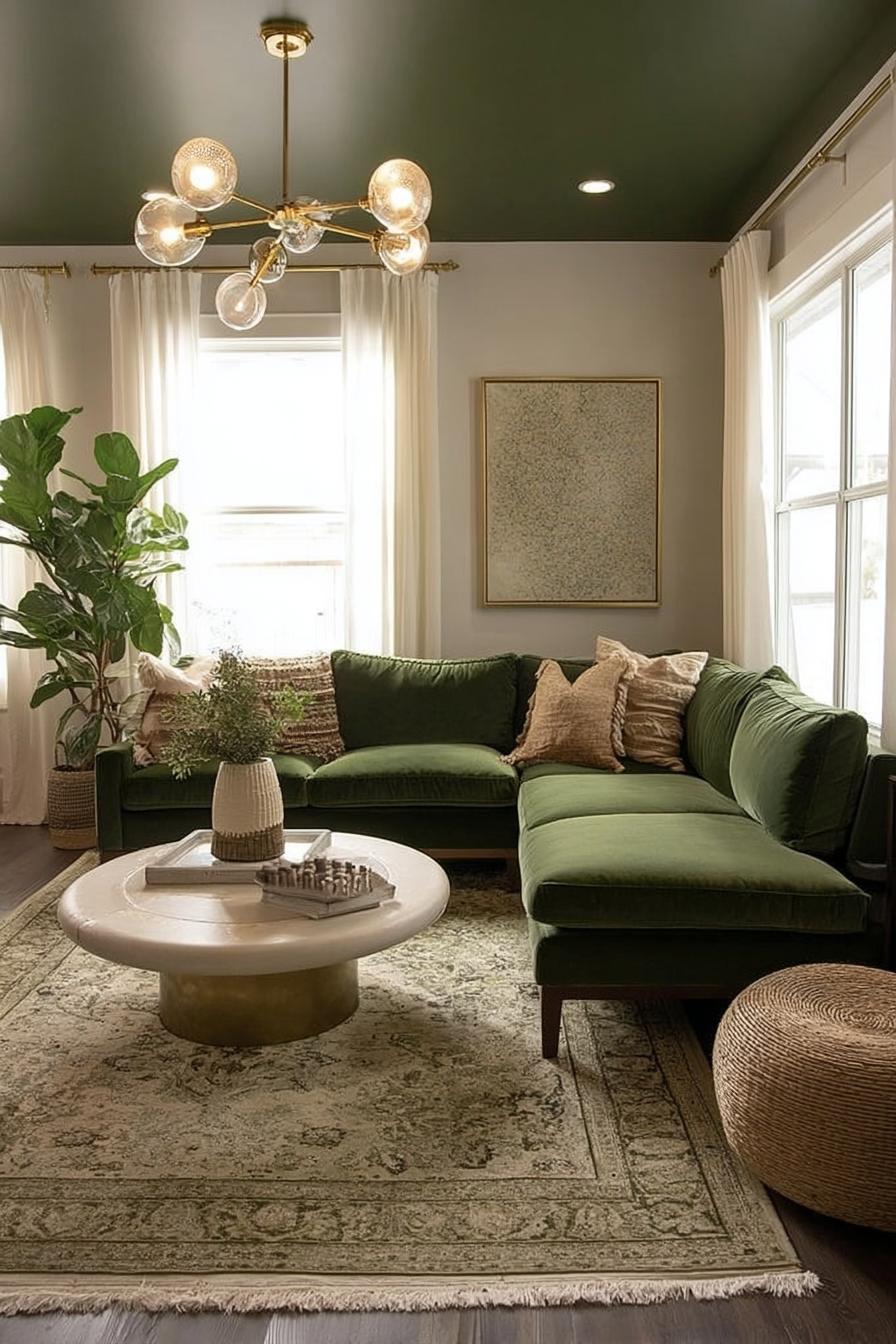
Who decided green can’t flirt with pink? Nature pairs them constantly – just ask any blooming garden. A single blush pillow against sage upholstery adds unexpected warmth.
Take that moss-green sofa you’ve been styling with safe cream pillows. Swap just one for dusty rose velvet and notice how both colors suddenly seem more alive – the green appears fresher while the pink feels grounded rather than sweet. Beige elements (perhaps the pillow’s piping or a nearby throw) marry these unlikely partners.
This small rebellion against expected color combinations opens the door to more creative choices throughout your space.
16. Arrange Earthy Accessories For a Warm Inviting Forest Retreat
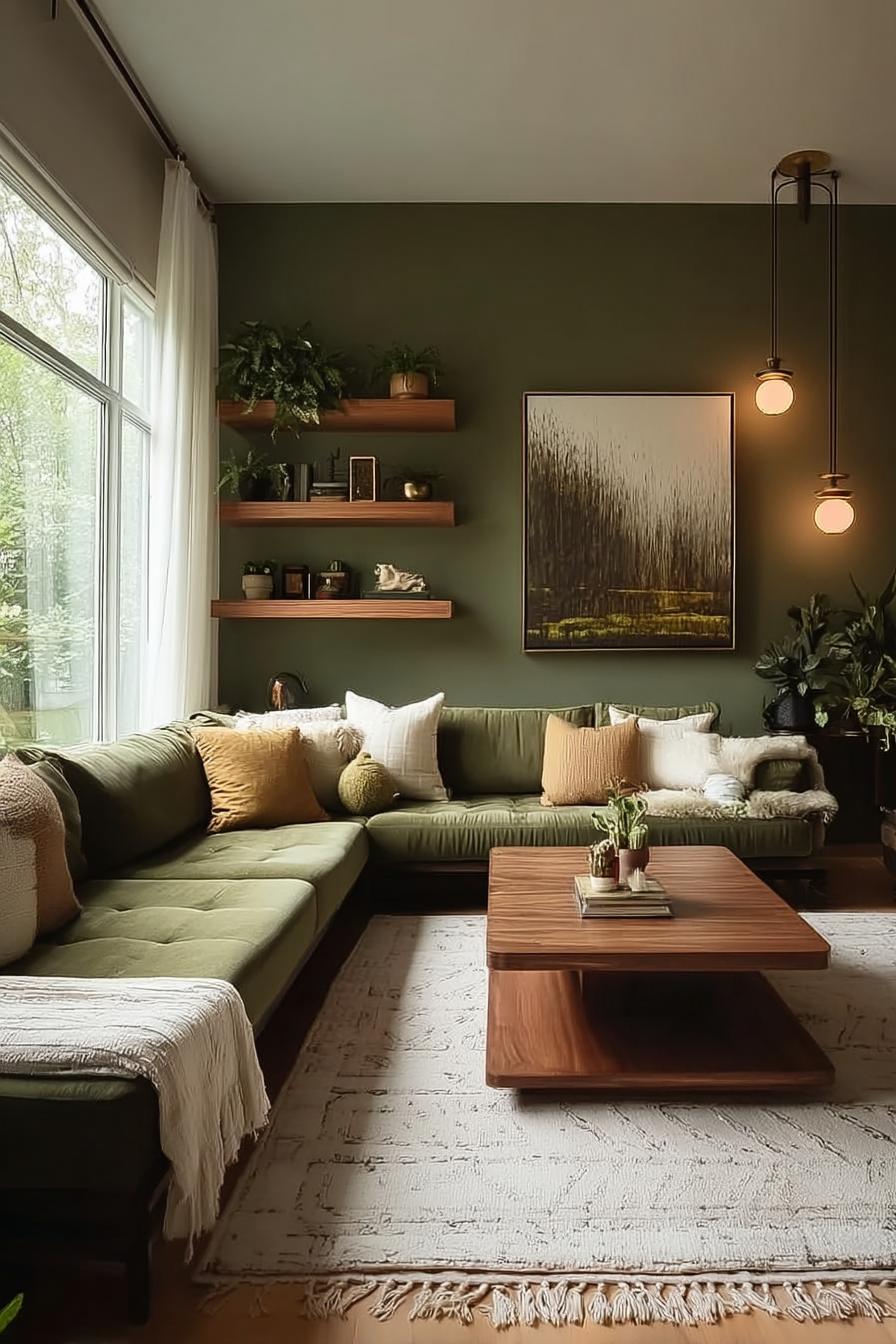
What makes a room feel like you’ve stepped into a peaceful woodland clearing? The answer lies in clustering natural materials that tell a cohesive story.
Rough ceramic vessels filled with dried grasses, wooden bowls holding river stones, and bark-textured frames create layers that synthetic materials can’t replicate. These pieces work because they share an origin story – each one whispers of outdoor spaces, bringing that tranquility indoors.
The effect multiplies when you group them intentionally; a driftwood sculpture near preserved ferns beside a bowl of moss-covered orbs.
Your living room transforms from a space you decorated into a sanctuary that seems to have grown naturally over time.
Conclusion
Green offers more range than any other color in nature’s palette – from the barely-there whisper of celadon to the commanding presence of emerald. You’ve seen how each approach, whether bold built-ins or subtle sage accents, shifts your living room’s entire personality.
Start with just one idea that sparked your imagination. Maybe it’s those layered plants or the unexpected pink pillow. Once you experience how green transforms light and mood in your space, you’ll understand why this color has captivated designers across centuries. Your living room awaits its green awakening.

